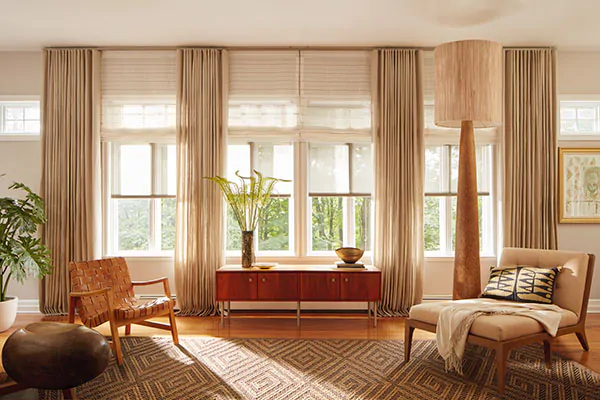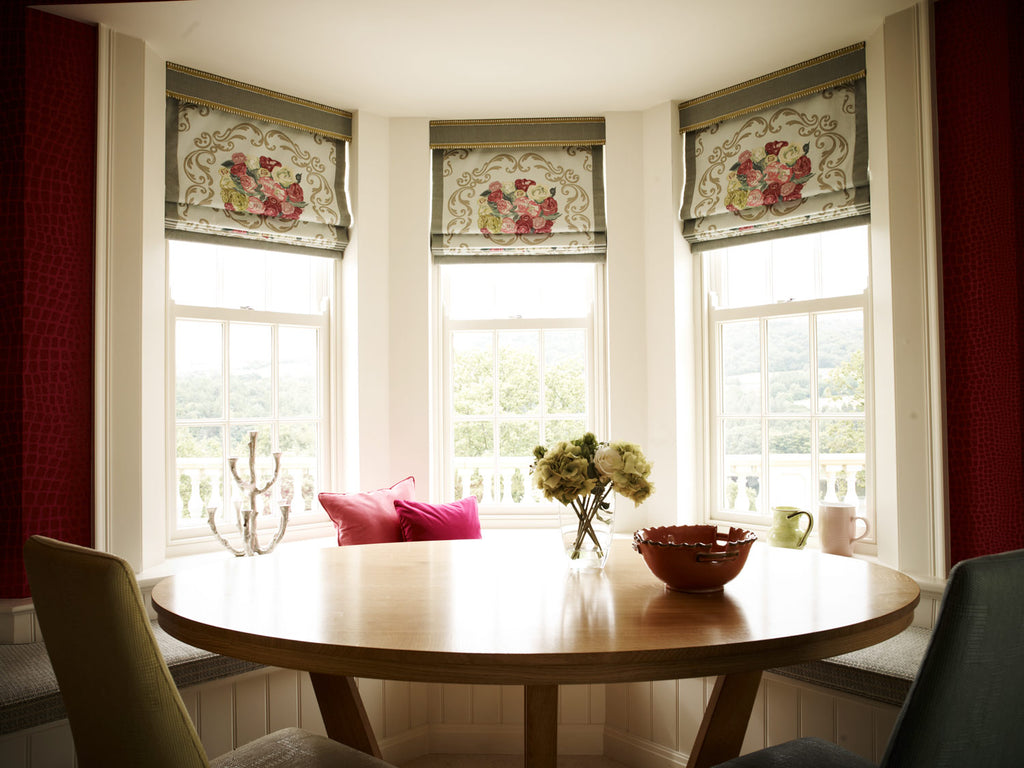The Ultimate Overview to Blinds: Kinds, Advantages, and Picking the Right Fit for You
The globe of home window treatments is huge and varied. Blinds can be found in various designs, each offering distinctive advantages for different settings. Comprehending these choices is vital for making notified decisions. Furthermore, elements like product choice and area functionality play a significant duty. As one considers the ideal equilibrium between aesthetics and functionality, the subtleties of determining and preserving blinds additionally arise as key elements. What should one focus on when choosing the suitable home window remedy?
Kinds of Blinds: A Detailed Overview
Blinds act as both practical and aesthetic elements in interior design, providing various alternatives to suit diverse choices and requirements. Amongst one of the most popular kinds are Venetian blinds, defined by horizontal slats that can be changed for light control and personal privacy. Roller blinds, known for their simplicity and convenience, come in a series of materials and patterns, making them appropriate for traditional and contemporary settings. Vertical blinds, commonly utilized for bigger windows or sliding doors, permit simple modification and are commonly made from material or vinyl.
Roman blinds, with their stylish folds, add a touch of class to any room, while cellular shades give insulation and power effectiveness. Additionally, bamboo blinds use a natural, eco-friendly choice, instilling areas with warmth. Each kind has unique functions and styles, ensuring homeowners can locate the excellent suitable for their details décor and practical demands.
Advantages of Installing Blinds in Your Home
The installation of blinds in a home supplies numerous substantial advantages. They offer boosted personal privacy control, enabling home owners to manage visibility from the outside. In addition, blinds add to energy effectiveness by helping to take care of indoor temperature levels, minimizing the reliance on heating and cooling down systems.
Boosted Privacy Control
Mounting blinds provides a considerable benefit in personal privacy control when home owners look for to enhance their living spaces. Blinds give a functional service for managing exposure from both the inside and exterior of the home. By adjusting the slats or increasing the blinds, individuals can conveniently handle the quantity of light getting in while at the same time blocking the view from outside. This versatility enables house owners to create a comfy atmosphere without sacrificing natural light. Furthermore, different designs and materials are offered, making sure that home owners can pick alternatives that seamlessly blend with their design while enhancing personal privacy. Ultimately, the installation of blinds functions as an effective means to safeguard personal space, motivating leisure and comfort within the home environment.
Energy Performance Renovation
Mounting blinds not only improves privacy however likewise significantly adds to power efficiency in the home. By controling natural light and minimizing warmth transfer, blinds can help preserve a constant indoor temperature. Throughout warmer months, closing blinds can shut out excessive sunshine, therefore decreasing the dependence on air conditioning. On the other hand, in cooler months, they can offer insulation by trapping heat, lowering home heating costs. In addition, energy-efficient blinds, such as mobile shades, are developed especially to minimize energy loss. By spending in quality blinds, home owners can create a more comfortable living setting while also reducing energy costs. Inevitably, the installation of blinds works as a practical service for those seeking to boost both comfort and power effectiveness in their homes.
How to Pick the Right Blinds for Each Space
Just how can one figure out one of the most appropriate blinds for every room in a home? The option process begins with evaluating the area's purpose and setting. In living areas, versatile blinds that permit light control while guaranteeing privacy are ideal. In bed rooms, blackout blinds can improve rest high quality by obstructing out external light.
Kitchens and restrooms need moisture-resistant options to withstand humidity, making plastic or faux wood blinds appropriate options. In addition, the wanted aesthetic plays a crucial duty; collaborating blinds with the space's style enhances the general ambiance.
Take into consideration the quantity of natural light each area gets; lighter blinds might be better for dark areas, while darker options can include heat to sunlit rooms. Eventually, understanding particular demands and choices for functionality and design will certainly lead homeowners in making informed decisions customized to each space's unique requirements.
Product Options: Wood, Plastic, Textile, and More

Timber Blinds Benefits
Wood blinds are a preferred selection amongst homeowners looking for a blend of visual appeals and functionality. One significant advantage of timber blinds is their natural beauty, offering a warm and inviting appearance that boosts any kind of interior design. They are available in different surfaces and colors, permitting for personalization to match individual style. Furthermore, wood blinds give outstanding light control and personal privacy, as their slats can be easily readjusted to filter sunshine while preserving seclusion. Their sturdiness is one more benefit; with proper treatment, wood blinds can last for years without losing their allure (Phoenix shades installation). They have insulating residential or commercial properties, helping to regulate interior temperatures and potentially lowering power prices. On the whole, timber blinds combine style and practicality, making them an basics excellent selection for many houses
Vinyl Resilience Includes
Plastic blinds stick out for their extraordinary resilience, making them a sensible selection for different settings. These blinds are immune to wetness, making them excellent for locations such as washrooms and cooking areas where humidity can be a problem. Unlike timber, plastic does not warp, fracture, or discolor under sunshine, making sure durable performance and minimal maintenance. Furthermore, they are offered in a range of styles and shades, enabling house owners to customize their look without sacrificing longevity. Vinyl blinds are also simple to clean; a basic wipe with a wet fabric is often enough to keep them looking fresh. Generally, their durability and low maintenance make battery powered blinds plastic a preferred option among property owners looking for both capability and aesthetic charm.

Textile Options Summary
Blinds can be found in a selection of material options that satisfy various visual and practical needs. Usual products include wood, textile, and vinyl, each offering distinct benefits. Wood blinds give a timeless, warm aesthetic and exceptional insulation but require maintenance to protect against bending. Plastic blinds are moisture-resistant and durable, making them excellent for high-humidity areas like kitchens and shower rooms. Textile blinds, offered in numerous shades and patterns, offer flexibility and soft qualities, boosting home decoration while providing varying levels of light filtration. In addition, options like artificial wood use the look of natural timber with added toughness. When choosing blinds, it is critical to examine the certain requirements of each space to ensure peak performance and style.
Gauging and Setting Up Blinds: Tips for Success
Although measuring and installing blinds may appear straightforward, cautious focus to detail is necessary for achieving an excellent fit. Initially, it is crucial to determine the window structure precisely, noting both the width and height. For within places, subtract a percentage from the size to guarantee a tidy fit, while outside mounts need to extend past the framework for much better light control and aesthetic appeals. Making use of a steel measuring tape is advised for accuracy.
When mounting, collect all essential devices, such as a level, drill, and screws. Complying with the producer's directions is critical to guarantee proper installation. It is recommended to pre-drill holes to stop damaging the brackets. Additionally, having a 2nd person can make the procedure smoother, especially when raising larger blinds. After setup, examination the blinds to verify they run efficiently and adjust as needed for maximum functionality.
Upkeep and Take Care Of Durable Blinds
Appropriate upkeep and treatment can substantially expand the life-span of window treatments. Routine cleaning is important; using a soft towel or a microfiber duster can efficiently eliminate dirt without damaging surface areas. For much deeper cleansing, a mild solution of soap and water is recommended, applied with a soft sponge, guaranteeing that no wetness seeps right into the systems.
For material blinds, spot cleaning is advisable, while wooden blinds need to be treated with a wood-safe cleaner to keep their surface. Avoid exposing callous extreme wetness, warmth, or straight sunlight, which can result in bending or fading.
Furthermore, routine examination of cords and devices can prevent damage. It's wise to adhere to manufacturer guidelines for details materials, as various blinds may have special care demands. By taking on these easy upkeep practices, homeowners can assure their blinds stay functional and cosmetically pleasing for years to come.
Frequently Asked Questions
Can Blinds Assist Reduce Energy Expenses in My Home?
Blinds can properly reduce power costs in a home by giving insulation, blocking warm throughout summer, and maintaining heat in winter months. Their ability to control light and air flow enhances energy effectiveness throughout the year.
Exist Child-Safe Options for Blinds?
Yes, there are why not try this out child-safe choices for blinds. These include cordless designs, retracting cables, and security gadgets that get rid of dangling cords, making certain a secure environment for children while maintaining functionality and aesthetic appeal in homes.

How Do Blinds Contrast to Shades or drapes?
Blinds typically offer much more accurate light control and area effectiveness than drapes or shades. Phoenix drapes. They are frequently much easier to keep and cleanse, while curtains give a softer visual, and shades can use varying insulation benefits
Can I Customize the Shade and Design of My Blinds?
Yes, blinds can be customized in both design and color. Various makers supply a large range of options, permitting consumers to pick products, patterns, and hues that suit their individual aesthetic and home decoration.
What Is the Ordinary Lifespan of Different Kinds of Blinds?
The typical life expectancy of blinds differs: wood blinds last 5-10 years, synthetic timber 7-10 years, light weight aluminum 5-10 years, and material tones around 5 years, relying on upkeep, direct exposure, and use to sunshine.
Shower rooms and kitchens require moisture-resistant options to withstand humidity, making plastic or artificial timber blinds appropriate options. Wood blinds provide all-natural elegance and heat, while vinyl gives toughness and convenience of upkeep. One significant advantage of wood blinds is their natural charm, using a warm and inviting appearance that enhances any indoor design. Furthermore, timber blinds offer exceptional light control and privacy, as their slats can be easily adjusted to filter sunshine while keeping privacy. For fabric blinds, spot cleaning is advisable, while wooden blinds should be treated with a wood-safe cleaner to keep their coating.